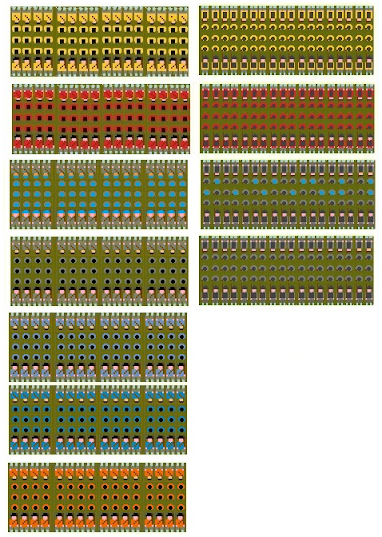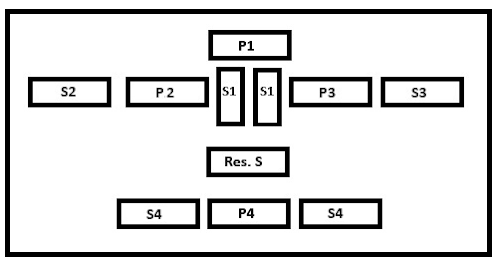As I have been doing my reading on European armies of the period 1618 - 1660 I have become aware that my thinking on cavalry is coloured by three things! Firstly I'm a child of the old WRG ancients rule sets that partly defined troops by the amount of armour they wore. Secondly that my main interest in 17th century wargaming is the British Civil Wars where cavalry was almost entirely of the one type and are all lumped together in the catch all definition of 'Horse'. Lastly that as a British Civil War re-enactor I only see one type of cavalry used in one tactical style. That leads me to consider that the standard cavalry unit consists of troopers in back, breast, pot and buff coat charging into contact with swords. All right that's a bit of an exaggeration I suppose. I knew about three Hazlerigg's Lobsters and similar types and the use of pistols shooting from range, but at some level I still have the light, medium, heavy cavalry WRG mind set.
Lets be honest here, this is not helpful when looking at European cavalry in the period up to and during the BCW in a wider European context. I have just spent time looking at period descriptions of Cavalry and it's becoming clear that even the 17th century writers didn't always agree on how to classify cavalry types.
One term I have come across is 'Battle Cavalry', these are cavalry whose role is to charge into contact with the intention of breaking the enemy formation. It doesn't seem to consider the speed of the charge though. Everything else seems to be considered as 'Light' cavalry such as those intended to provide fire support to these charging types. Oh but wait where does that leave WRG style light cavalry?
Another way of defining cavalry is as Cuirassier or Harquebusier. This is similar to the battle cavalry definition. Cuirassiers charge home while Harquebusiers don't. This seems to be a common definition in Imperial armies. What it isn't doing is defining the amount of armour worn as later in the Thirty Years War some cuirassier regiments only wore back, breast and pot, while early in the war some Harquebusier units wore quite extensive armour. Plus it still doesn't cover Hussars and Cossacks.
 |
The Battle of the White Mountain 1620 (via Wikipedia)
created by Matthaus Merian in 1635 |
A much better view of the above can be had on the Wikipedia page about the battle, as it can be increased in size quite nicely. Looking at that engraving gives us another way of defining cavalry. The engraving gives titles to the various bodies of cavalry. On the Imperial side we have
- Cossacken (I assume these are Cossacks as account's speak of Polish Cossacks),
- Various units of Reutez (Reiters)
- Croaten and Ungaren (Hussars? Possibly skirmishing cavalry)
While on the Bohemian Protestant side most bodies of cavalry are not given titles but a single large body are noted as Reutez.
Non of which says anything about the amount of armour worn or tactical preferences although it can be inferred that Reitez are pistol armed Cuirassier types. Notice the conspicuous lack of support types like Harquebusiers though. They were almost certainly present just not noted on the engraving.
In my home brew rules the default cavalry type is 'Horse' with back, breast and pot over a buff coat, armed with pistols and a sword. Whether they fight cuirassier or harquebusier style depends on the tactical style chosen from:
- Shock - go straight for melee contact
- Mixed Shock - preference for melee but can shoot
- Mixed Firepower - preference for shooting but can melee, or
- Firepower - Shooting at range is the standard, will only melee in exceptional circumstances.
There is an armoured bonus in combat for troops with better armour than the default and a minus for poorly equipped horse who lack armour. An optional rule looks at weapon reach in combat giving a first melee round bonus if you outreach the enemy.. Weapons reach goes from Pistol in melee, pike, lance, polearm, sidearms.
 |
| This is what I had in mind as 'standard' Horse. (Photo of SK horse by Angus Kirk) |
Using that I can define cavalry as follows:
Cuirassier Lancers - Horse, Armoured, Shock Tactics, Lance reach bonus.
Reiters/Ritters - Horse, Armoured, Mixed shock or Mixed Firepower Tactics, Pistol reach bonus.
Late TYW Reiters/Ritters - Horse, Mixed shock or Mixed Firepower Tactics, Pistol reach bonus. Some nations may have still used some in three quarter armour until the end of the war.
Croats, Hussars, Cossacks etc - Horse, Poorly equipped, Skirmish or Firepower Tactics, Pistol Reach bonus (may have lance if historically correct).
Early TYW Harquebusiers - Horse, Armoured, Mixed Firepower Tactics, Pistol reach bonus.
Mid and Late TYW Harquebusiers - Horse, Mixed Firepower or Mixed Shock Tactics, Pistol reach bonus. This includes most BCW English cavalry. Note how Harquebusiers and Reiters are now pretty much identical.
Swedish Hakkapeliitta's - Horse, Poorly equipped, Shock or Mixed shock, Pistol Reach Bonus. I'd tend to class these as elite to reflect the reputation they had.
BCW late war Royalist Horse -Horse, Poorly equipped, Shock or Mixed shock side arm weapon reach. (e.g, The Northern Horse and second rank regional cavalry units).
Covenanter Lancers - Horse, Shock or Mixed shock, Lance Reach Bonus.
Covenanter Horse - Horse, Mixed Firepower or Mixed Shock Tactics, Pistol reach bonus.
Other factors to take into account are whether to treat the unit as either elite or unwilling and whether they are equipped with Arquebus/carbines and can fire those while mounted.
EDIT
When I first drafted this article I forgot to say that the individual posts on each army will state the formations and weapons used. That adds most of the period flavour required to fully individualise each cavalry type.





















